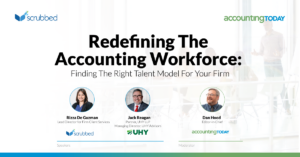Properly recognizing impairments and losses on your loans, debt securities, and other financial assets is critical to ensuring you can develop and share accurate financial statements for all your stakeholders. But in the past, the methodology most commonly used to recognize those impairments wasn’t ideal.
With the Financial Accounting Standards Board (FASB) now requiring the use of a new Current Expected Credit Loss (CECL) model, it’s important to understand what this model involves, how it differs from past methodologies, and how to get ready to adopt the new standard.
The Need For An Improved Model
In the wake of the financial crisis that began in 2008, regulators took a closer look at how financial institutions and other businesses were recognizing credit loss impairments and determined it was not being done in a sufficiently timely way.
US GAAP has historically used the incurred loss methodology, in which an organization didn’t recognize a credit loss impairment until it was probable that an asset was impaired and the organization could estimate the loss amount based on past events and current conditions. However, this methodology primarily focuses on the past—rather than taking future anticipated conditions into account—and it delays impairment recognition. In addition, companies could use various credit impairment models under the incurred loss methodology, creating disparities and inconsistencies.
These limitations spurred the development of the CECL model, intended to provide financial statement users with more timely and relevant financial information that is not just based on past events and current conditions but also forward-looking information. The new model also aims to minimize the complexity of measuring expected credit losses and allows companies to determine the most appropriate methodology based on their specific business and the nature of their financial instruments.
FASB introduced the CECL model by issuing Accounting Standards Update (ASU) 2016-13, Financial Instruments – Credit Losses (Topic 326).
CECL is Now Going into Effect
The ASU requires organizations to measure credit losses mainly on financial assets at amortized cost and other instruments using a CECL model. This new model requires you to measure lifetime expected credit losses at the reporting date based on a combination of historical loss experience, available and relevant current conditions, and reasonable and supportable forecasts of future conditions.
Your effective date for implementing the new model depends on the type of entity you operate.
• For public business entities that meet the definition of a Securities & Exchange Commission (SEC) filer, excluding smaller reporting companies, CECL was implemented at the beginning of 2020 and is currently effective.
• All other entities, including all other public business entities (including SEC filers that are smaller reporting companies), private companies, not-for-profit organizations, and certain employee benefit plans, should adopt CECL beginning in 2023.
To meet this fast-nearing deadline, you need to understand the challenges and requirements of adopting CECL and make sure your organization is prepared to comply.
Does CECL Affect Your Company?
Of course, financial institutions like banks, credit unions, and others in the financial services industry will be heavily affected by the new impairment model since most of the financial instruments these companies hold are within the scope of ASU 2016-13. However, the new standard isn’t just for financial institutions.
CECL applies to any entity that holds financial assets such as trade receivables, loans and loan commitments, held-to-maturity debt securities, net investments in leases, off-balance-sheet credit exposures, reinsurance receivables, and other financial assets carried at amortized cost.
For financial assets like these, you’ll need to recognize and present an allowance for credit losses or a contra-asset account in your financial statements, rather than as a direct write-down of a financial asset’s amortized cost basis. There is no specific threshold for recognizing an impairment allowance under the new model. You should recognize impairment that reflects a current estimate of all your expected credit losses for your financial assets as of the reporting period. For assets previously assessed with a low loss risk, such as current trade receivables, you must also measure expected credit losses, which is a significant change from the current US GAAP.
CECL adoption is likely to affect your financial reporting significantly. By requiring you to recognize expected credit losses on a timelier basis, CECL will result in recognizing higher allowances for credit losses that reduce the current ratio. In addition, because you’ll need to recognize provision expenses upfront, you may experience higher expenses affecting several key profit-and-loss metrics, such as operating profit, net income before and after taxes, EBITDA (earnings before interest, taxes, depreciation, and amortization), and EPS (earnings per share), for example. With these financial metrics impacted by the new credit loss model, you’ll also see an impact on your overall financial position and performance, existing loan agreements, and even investors’ perceptions of your company.
It’s Time To Get Ready
If your business falls within the category of entity types that must adopt CECL beginning in 2023, it’s time to start preparing if you haven’t already. Steps like the following can help you get ready to adopt this new accounting standard:
● Be proactive. It’s worthwhile investing time and effort to understand the CECL requirements and changes, along with how it differs from US GAAP and how these differences will affect your current accounting policies and processes. Consulting with experts like the Scrubbed team can help you better understand how the new accounting standard will affect your business specifically.
● Establish the right team. Adopting CECL requires a team effort. Ensure that your senior management and the right players within key departments, such as finance and accounting, credit, risk, and IT, are on board and well-trained to provide deep expertise on CECL
● Evaluate the current situation. Start with your current credit loss information and processes to identify existing resources that could be used as leverage. For example, the new guidance doesn’t require a specific method for developing an estimate of expected credit losses. A company that currently uses discounted cash flows or loss rates to create estimates could use them as leverage in developing an expected credit loss model.
● Address the gaps. Once you’ve evaluated the currently available information and identified other missing resources or information, create a plan to address the gaps between these data. Your plan might include consulting with companies that have already completed a CECL implementation, along with auditors, regulators, and third-party resources that can provide information and resources to help you meet the new requirements.
● Determine the inputs needed to calculate losses. Accumulating and determining the appropriate inputs needed to calculate expected credit losses is a significant step. These inputs may include your historical credit information; the complexity, size, and composition of your financial assets portfolio; industry operating results and forecasts; and relevant macro and micro economic factors, like inflation, unemployment, and gross domestic product. This exercise requires thorough analysis of relevant inputs and how they might indicate customer payment behaviors and credit ratings, as well as the professional judgment to ensure the data you’re considering are relevant and indicative of customers’ future credit risk.
How Scrubbed Can Help
CECL aims to provide companies and their stakeholders with more timely and reliable financial information on expected credit losses, so there are certainly advantages to look forward to. Yet, adopting the new model won’t be a simple undertaking since it will require substantive changes in how you handle certain financial transactions and your financial reporting.
The Scrubbed Technical Accounting* Group can assess your CECL readiness, consult with you on complex accounting transactions involving CECL, prepare related accounting memos, and provide audit support.
Are you ready to take on the new CECL model? Contact Scrubbed to learn how we can make the process efficient and effective.
Disclaimer: The information contained herein is general and is not intended to address the circumstances of any particular individual or entity. It is not intended to be relied upon as accounting, tax, or other professional services. Please refer to your advisors for specific advice. Although we endeavor to provide accurate and timely information, there can be no guarantee that such information is accurate as of the date it is received or will continue to be accurate in the future. No one should act upon such information without appropriate professional advice after a thorough examination of the particular situation.





